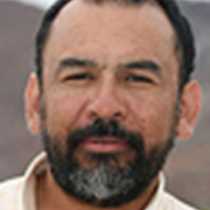San Marcos Island & Santa Rosalia town
Our National Geographic Sea Lion sailed against the northerly wind at sunrise as we approached San Marcos Island, our morning destination of this day. This small island, though dry and barren, is interesting because of its dramatic and deformed layers of volcanic tuff composed of ashes, pyroclastic material and mud, plus marine terraces and gypsum deposits. Our Naturalists explained that gypsum has been extracted for more than a century and is exported to the United States and some Asian countries. As a corroboration of what they said, a white cloud of dust blowing above the mining site was seen from the distance during our walks on flat foothills, in the northwestern part of the island. From those mesas we also observed the magnificent volcano Tres Virgenes, on the peninsula, and Tortuga Island, a huge shield volcano rising from the waters of the Gulf of California in the east.
In the afternoon we docked at Santa Rosalia, a famous town that was founded for the mining of copper in 1885. The town was built by El Boleo Mining Company from France with a huge amount of investment, on the grounds of the Rancho Santa Agueda, and brought the progress and development to the zone: the company contracted a lot of people and promoted the commerce, cattle raising and agriculture to provide food and other supplies to the many workers. Roads connecting important towns or missions like San Ignacio or Mulege, were also constructed and opened the doors for an important colonization phenomenon unique to the peninsula.
Everywhere in Santa Rosalia we were able to see the remnant structures of El Boleo Mining Company: the smelting plant (in the photos), the office, the houses of the workers, and other facilities. They are in the process of restoration by the government to make Santa Rosalia a true Historical Site with enormous relevance for the history of the peninsula. Two main attractions were the church made of steel and designed by Gustav Eiffel, and the bakery, founded in 1906 and still producing delicious bread.
El Boleo closed in the decade of the 1950s. The workers and their descendants became fishermen and ranchers in order to survive. The Humboldt squid is the main industry for fisheries, but eventually sardine is also caught and exported to Europe. Our guests and staff were fortunate enough as to observe the loading of trucks with 90 tons of sardine from a single ship.




